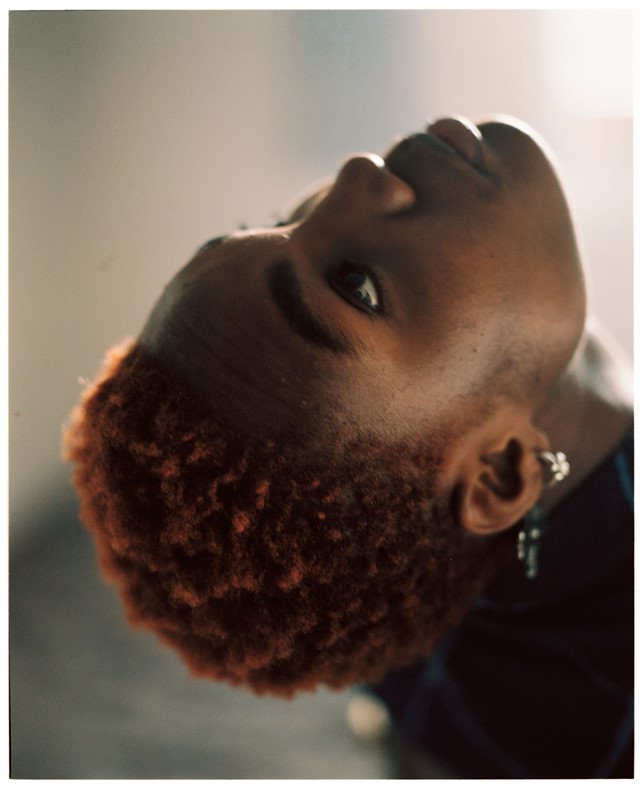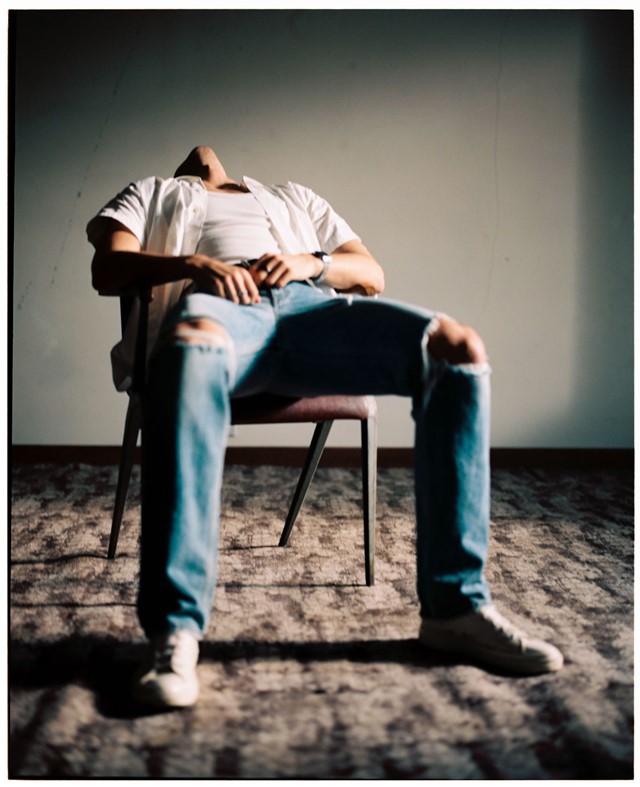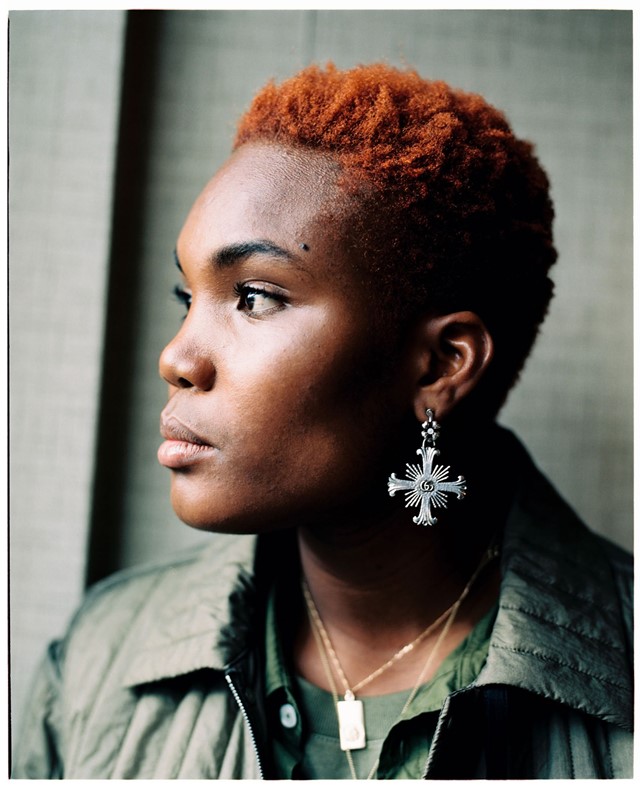20-year-old west Londoner Arlo Parks puts her heart and soul into her music. Here, she speaks to Shannon Mahanty about her creative process and her latest single, Caroline
Arlo Parks knows how to tug at your heartstrings. For the past few years, the west Londoner has been winning over fans and critics alike by pouring the rawest iteration of her heart and soul into some of the most refreshingly honest pop ballads in contemporary music. At 20, she may be free from the angst of her teen years, but her earliest music was the purest product of adolescent experiences in all their intensity, from crushes and heartbreak, to schoolyard politics – every thought and feeling was committed to song, with no stone left unturned.
In her latest single Caroline, Parks turns her magnifying glass to the most chaotic moments of romantic relationships. In the video, which premiered yesterday, we meet her alone and teary-eyed in the middle of a misty park. It’s a poignant start to a visual that pairs fragmented moments of a relationship – from passionate embraces to cold shoulders – with powerful images of the elements; overflowing baths, fierce winds, bodies plunging into water.
“Relationships can have this extremely volatile nature, in the sense they can be really amazing and loving – but also incredibly powerful and destructive” says Brock Neal Roberts, the director of the video. “In that sense they can feel really elemental, and that gave us a different way of portraying the emotions in a relationship outside of the characters showing emotion themselves.”
At the end of what has been a difficult year for many, the raw tenderness that comes with Parks’ introspective musings feels more heightened than ever. As she drops her new video, she reveals exactly what inspired it, from the work of Wolfgang Tilmans to the sight of two strangers fighting in Hammersmith Broadway …

Shannon Mahanty: The video for Caroline is beautiful; tell us about the experience of making it.
Arlo Parks: The shoot was amazing. We were filming in Essex, basically the middle of nowhere and as we were driving up there was all this mist and frost and it felt kind of eerie! Then on set there was such a warm atmosphere among the crew and the cast. Everything felt exciting, we kept getting the shot and everyone had such a positive energy that day.
SM: How did you go about translating the song into video?
AP: As I’m writing a song, I focus on the music and try not to let my mind wander too much, but if I do think of any visual moments or references that I think would connect nicely, I’ll make a note of it. With Caroline, I remember thinking about this Wolfgang Tilmans exhibition I’d seen online and these Nan Goldin photographs I’d seen at the Tate, which I shared with Brock, the director. I knew I wanted this warm golden light.
SM: The use of the elements in the video is very powerful ...
AP: There’s something so primal about it! To me, nature is so inspiring – that sense of constant change, the way things are cleansed or washed away, and it’s beyond your control. There’s definitely a parallel to the way you can be changed or overwhelmed by a flow of emotion. I also just think it looks beautiful; the way that the clothes flow in the wind, having the trees in motion like that just creates this sense of chaos.

SM: The opening line of the song is about watching a couple fight while waiting for the bus, are you much of a people-watcher? How does the behaviour of strangers inform your music?
AP: I write from a personal perspective, but sometimes seeing something in the street like that will spark something that reminds me of my own experiences. Caroline was the first time I’d written about strangers, generally I’m inspired by the things that have happened to me or the people close to me, but I do watch people; even facial expressions or clothes can be the start of something.
I wrote Caroline during lockdown, in March. I remembered having seen this couple having a fight outside Hammersmith Broadway, near where I live. It was really difficult to know without context whether that was an explosion that might happen monthly or whether that fight was the end for that couple and that’s kind of the point of the song. The ambiguity really interested me. I was listening to a lot of Radiohead – In Rainbows and Hail to the Thief – and The Streets, particularly their first album, Original Pirate Material. That idea of storytelling really came through.
SM: Your lyrics tend to stand out for their emotional frankness. What do you attribute that quality to?
AP: I’ve always been quite a direct person. As kids if we were ever sulking or upset about something, my parents would always say, “What’s happened? Tell us how you feel.” I always found that really helpful; talking something through and vocalising what’s wrong. I’ve found that internalising things just makes them come up in uglier ways further down the line, so it’s definitely something I’ve tried to maintain throughout my life.
SM: A lot of people can relate to your lyrics. What has the reaction to Caroline been like?
AP: Someone sent me a message the other day and said that the song made them realise that their partner was really trying their best and that [their relationship] couldn’t really have gone any other way. That’s something I didn’t think about at the time, and I love that. You might write about one story, but it can mean a million different things to a million different people.
SM: It’s been a weird year to say the absolute least. What has it been like for you?
AP: It feels like this year has gone on forever, but in terms of my music touching more people and getting to connect with artists I really look up to, it’s been really beautiful. As a social creature it’s been hard – I get my energy from being around other people. But I taught myself to DJ and I’ve been cooking a bunch, so there’s definitely been some positives too.
SM: How has the pandemic impacted work on your debut album, Collapsed in Sunbeams?
AP: The reason why it was so helpful was really being able to sit with my thoughts and really think about what message I want to put forward and what I wanted it to sound like, because I’ve never written an album before. Having that extra time really gave me space to breathe and to experiment as well.
I think Collapsed in Sunbeams is definitely a product of its environment, but I guess I’ll never know whether I would have done this anyway. We kept the same method in terms of getting an Airbnb and writing and recording in there. I approached it very much song by song, I would just wake up and say OK, I’ve been listening to Nick Drake or I’ve been listening to Portishead; let’s do something like that today. I tried to not put pressure on myself. I was very concerned before the pandemic about finding a thread and knowing what the concept was going to be, but having space allowed me to just focus on each song as it came.
